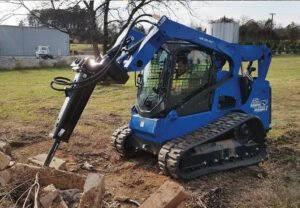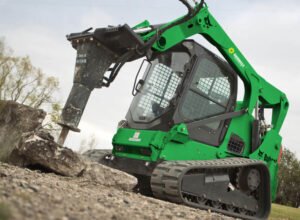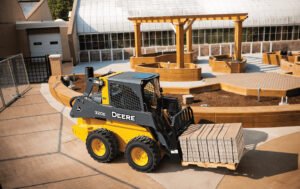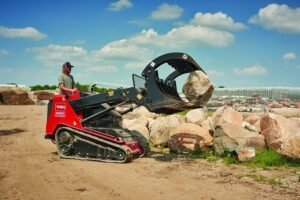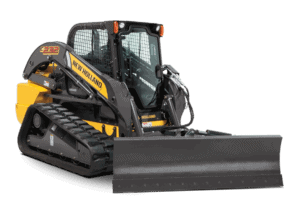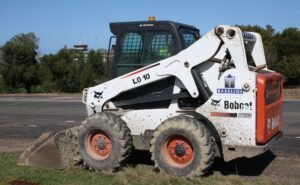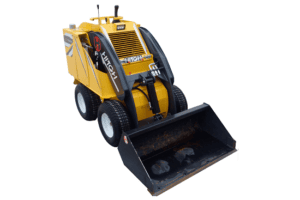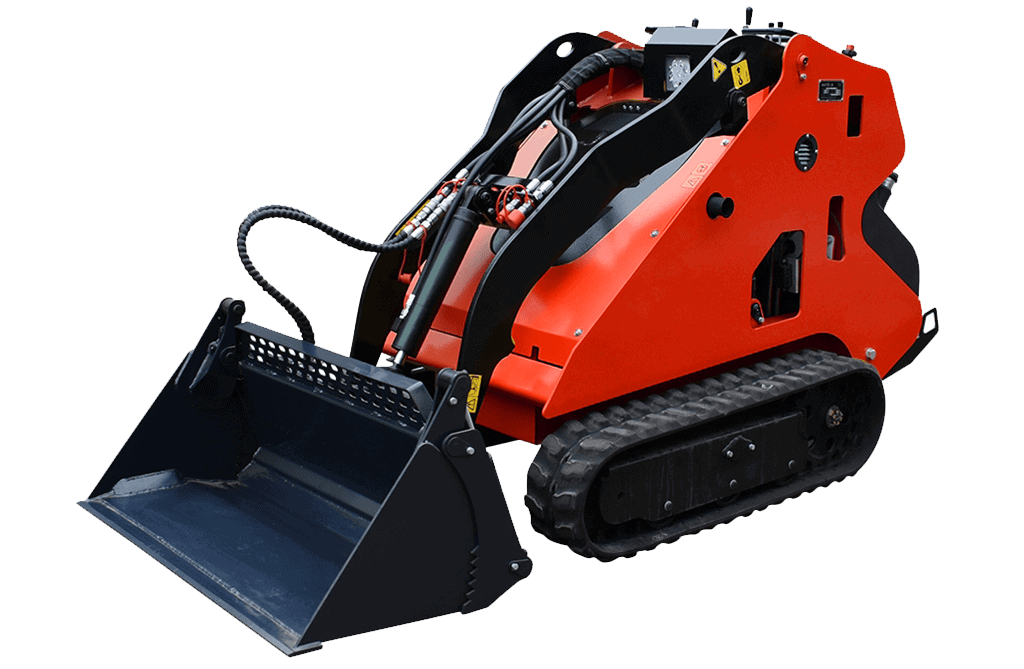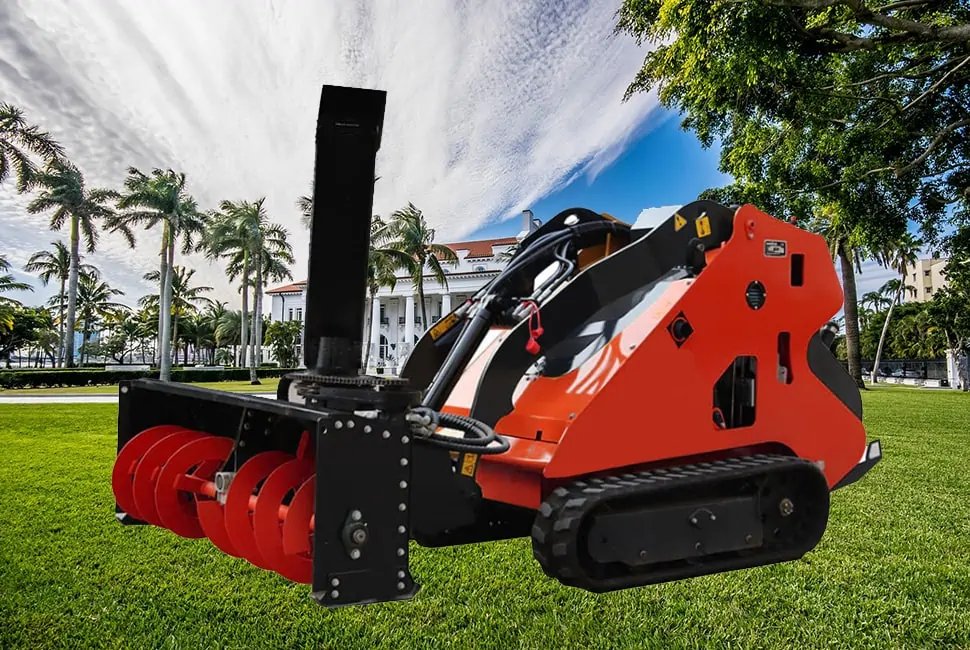
6 Amazing Benefits of a Compact Wheeled Skid Steer Loader
Introduction Are you tired of dealing with bulky and cumbersome machinery on your worksite? Well, we’ve got great news for you! In this blog post, we’ll explore the incredible benefits of compact size in wheeled skid steer loaders. Picture this: a powerful machine that can effortlessly maneuver through tight spaces, navigate uneven terrain, and easily tackle various tasks. This is what we call a compact wheeled skid steer loader. These compact loaders offer versatility and efficiency from construction sites to landscaping projects. Say goodbye to frustration and hello to enhanced productivity. Join us as we delve into the world of compact wheeled skid steer loaders and discover how they can revolutionize your work experience. Versatility and Maneuverability Of Compact Wheeled Skid Steer Loader Regarding versatility and maneuverability, compact wheeled skid steer loaders are in a league of their own. Their compact size advantage allows them to excel in tight spaces and confined areas where larger machines struggle to fit. Whether you’re working on a construction site with limited access or navigating through narrow hallways for a renovation project, these compact loaders are the perfect solution. One of the key benefits is their ability to effortlessly navigate obstacles. With their small turning radius and agile design, they can weave through tight spots, maneuver around obstacles, and access areas that would be impossible for larger equipment. This makes them ideal for working in narrow job sites such as urban construction projects or interior renovations. Examples of Industries Where Maneuverability Is Crucial (e.g., Construction, Landscaping, Agriculture) The versatility and maneuverability of compact wheeled skid steer loaders are particularly valuable in industries like construction, landscaping, and agriculture. In construction, these loaders can easily handle tasks such as material handling, excavation, and demolition in confined spaces. Landscapers can utilize them for grading, trenching, and transporting materials within tight residential yards. Even in agriculture, they prove their worth by assisting in feeding livestock, moving hay bales, and maintaining small to medium-sized farms. Ease of Transport and Storage Of Compact Wheeled Skid Steer Loader Regarding ease of transport and storage, compact wheeled skid steer loaders offer significant advantages that make your life much easier. The compact size of these loaders plays a crucial role in their portability, allowing you to effortlessly transport them between job sites without any hassle. Unlike larger machines, compact loaders can be easily loaded onto trailers or trucks, making transportation a breeze. One of the key benefits of compact loaders is their ability to fit into standard-sized trailers and trucks. This eliminates the need for specialized transportation equipment or permits, saving time and money. Whether moving equipment across town or traveling long distances, the convenience of fitting a compact loader into a standard trailer or truck cannot be overstated. Convenience of Storing Compact Loaders in Limited Spaces (e.g., Garages, Sheds, Equipment Yards) Another advantage of their compact size is the ease of storage. These loaders can be conveniently stored in limited spaces such as garages, sheds, or equipment yards. Their smaller footprint means you don’t need to allocate a large area for storage, making them an excellent choice for contractors or individuals with limited storage space. You can keep your loader protected from the elements and securely stored until it’s needed for the next project. Increased Efficiency and Productivity Of Compact Wheeled Skid Steer Loader Compact wheeled skid steer loaders are a game-changer when it comes to increasing efficiency and productivity on the job site. Impact of Compact Size on Productivity Levels Their compact size plays a vital role in boosting productivity levels. With their maneuverability and agility, these loaders can easily navigate tight spaces and confined areas, allowing you to complete tasks faster and more efficiently. No more wasting time trying to maneuver larger equipment into position or struggling with limited access points. Ability to Perform Multiple Tasks With Minimal Downtime Moreover, compact loaders excel in performing multiple tasks with minimal downtime. Equipped with a wide range of attachments, they can quickly switch between functions, eliminating the need for separate machines for each task. A compact loader can handle everything, whether you need to dig, grade, lift, or sweep. This versatility saves valuable time and increases overall productivity on the job site. How Quick Attachment Changes Enhance Efficiency and Versatility? One key feature that enhances efficiency is the ability to make quick attachment changes. Compact loaders are designed for easy and rapid attachment swapping, allowing you to transition seamlessly from one task to another. This not only saves time but also enhances the machine’s versatility. From buckets to forks, augers to brooms, the ability to change attachments on the fly ensures that you have the right tool for every job, maximizing efficiency and reducing downtime. Enhanced Operator Comfort and Safety Of a Compact Wheeled Skid Steer Loader When it comes to operating machinery, comfort and safety are paramount. Ergonomic Design of Compact-Sized Loaders for Operator Comfort Compact wheeled skid steer loaders provide enhanced operator comfort and safety features. The ergonomic design of these loaders ensures that operators can work comfortably for extended periods. Operators can reduce fatigue and work more efficiently with features like adjustable seating, ergonomic controls, and easy control access. Improved Visibility and Control Due to Smaller Size One of the advantages of compact loaders is their smaller size, which translates to improved visibility and control. Operators have a clear line of sight to the surrounding work area, reducing the risk of accidents and improving overall operational efficiency. Maneuvering in tight spaces becomes easier, and operators can navigate with precision. Safety Features and Operator-Friendly Controls That Promote Safe Operation Safety is a top priority in the design of compact loaders. These machines have safety features such as rollover protection structures (ROPS) and seat belts to protect operators during accidents or rollovers. Additionally, operator-friendly controls ensure operators can easily and intuitively operate the machine, minimizing the risk of errors or mishaps. Cost Savings Regarding cost savings, compact wheeled skid steer loaders are a smart investment in more ways than one. How


